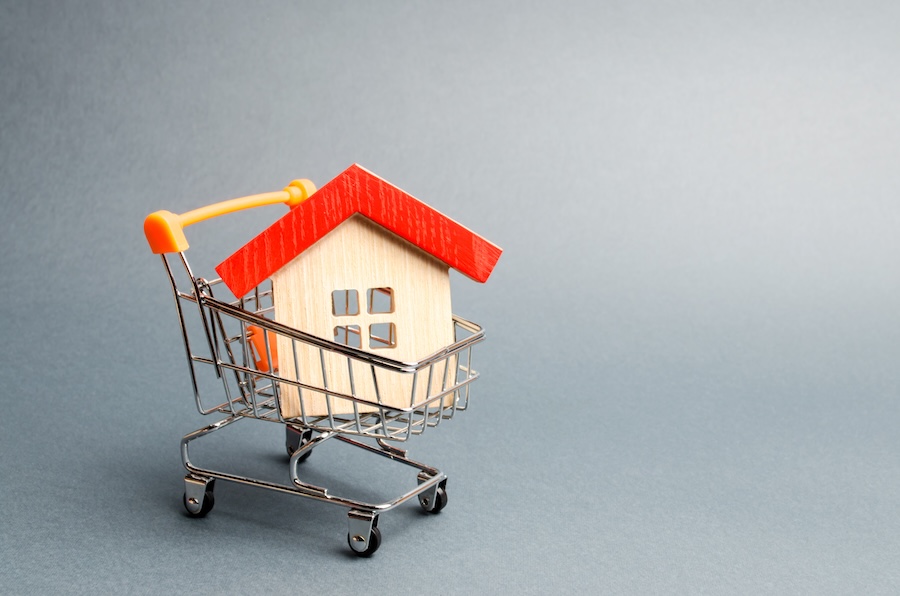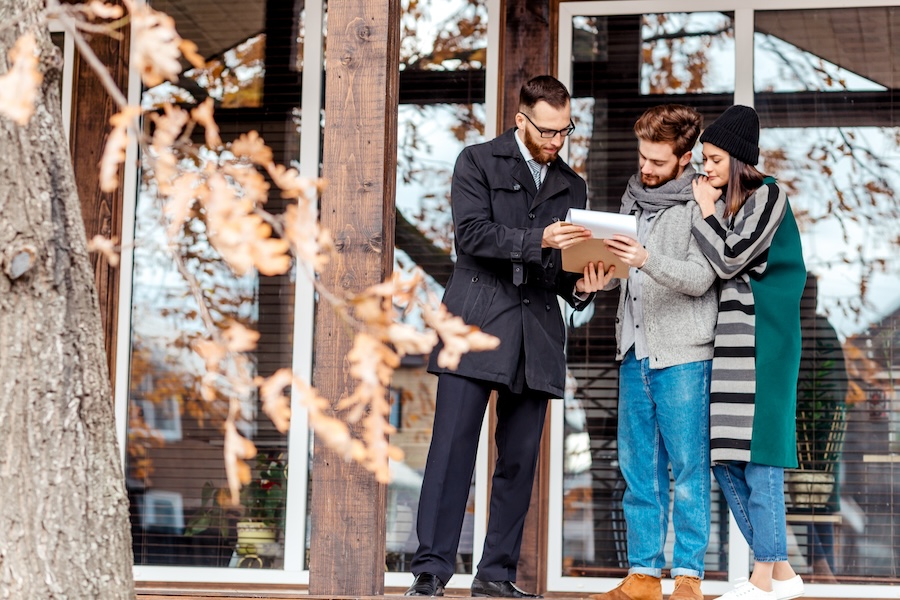Welcome to the exciting journey of buying your first home in Ontario! This adventure, often filled with dreams and aspirations, can also bring a host of questions and uncertainties, especially when it comes to understanding the financial aspects of purchasing a property.
One of the most critical components you’ll encounter is the down payment – a term you’re likely to hear frequently as you embark on this journey.
Ontario’s real estate market offers a diverse array of options for first-time home buyers, from bustling city condos in Toronto to charming suburban homes in Ottawa and serene countryside retreats in rural areas. Each of these options comes with its unique set of considerations, particularly regarding the financial investment required upfront.
For many first-time buyers like you, navigating the real estate landscape can be both exhilarating and daunting. The process involves more than just choosing the right home; it’s about understanding the financial commitments, particularly the down payment, that come with such a significant purchase.
The down payment is the cornerstone of your home buying process, impacting everything from your mortgage amount to the long-term affordability of your dream home.
As you take your first steps in the Ontario real estate market, this guide aims to demystify down payments, making them less daunting and more manageable.
By understanding the essentials, you’ll be better equipped to make informed decisions, turning the dream of homeownership into a reality.
What are Down Payments, Why Do They Matter?
What exactly is a down payment? Simply put, it’s the initial chunk of money you pay upfront when purchasing a home. Think of it as your investment stake in your future property. This isn’t just any payment; it’s a significant part of your home purchase that directly influences your mortgage.
The larger your down payment, the less you’ll need to borrow, and consequently, the less you’ll pay in interest over time.
The importance of a down payment extends beyond just reducing the amount you borrow. It also affects your mortgage terms and the interest rates you qualify for. Lenders see a substantial down payment as a sign of financial stability, often rewarding you with more favorable loan terms and interest rates. In essence, the more you can put down upfront, the more savings you can enjoy over the life of your mortgage.
But it’s not just about the numbers. Your down payment also plays a pivotal role in determining the overall affordability of your new home.
A higher down payment could mean lower monthly mortgage payments, making it easier to manage your budget and affording you the financial freedom to enjoy your life in your new home without being overstretched.
For many first-time buyers, saving for a down payment can feel like a steep mountain to climb. However, with the right understanding and strategies, which we will explore in this guide, accumulating your down payment can be a more attainable goal than you might think.
As you navigate this crucial aspect of home buying, remember, your down payment is more than just a financial requirement; it’s the foundation upon which your homeownership journey begins.
Minimum Down Payment Requirements in Ontario
Embarking on the journey of purchasing your first home in Ontario comes with its own set of financial guidelines, particularly regarding the down payment.
The size of your down payment is a crucial factor in determining the kind of home you can afford, as well as the terms of your mortgage. In Canada, the rules for down payments are quite specific and vary depending on the value of the home you’re looking to buy.
For homes priced under $500,000, the minimum down payment required is 5% of the purchase price. This means if you’re eyeing a property worth $400,000, you would need to save at least $20,000 for the down payment.
Now, for homes that fall in the price range between $500,000 and $999,999, the down payment requirement gets a little more complex. You still need to put down 5% for the first $500,000, but any amount above that requires a 10% down payment.
For example, if you’re purchasing a home for $600,000, you’d need $25,000 (5% of $500,000) plus an additional $10,000 (10% of the remaining $100,000), totaling $35,000.
When it comes to luxury homes valued at $1 million or more, the minimum down payment jumps to 20% of the purchase price. So, for a home priced at $1.2 million, you’re looking at a down payment of $240,000.
It’s important to note that these are just the minimum requirements. Depending on your financial situation, such as your employment status or credit history, you may be asked to make a larger down payment.
For those who are self-employed or have a less-than-stellar credit history, lenders might require more significant down payments to offset the perceived risk.
If the mortgage payments for a specific property seem too high relative to your income, a larger down payment might be necessary to bring those monthly payments down to a more manageable level.
The Role of Mortgage Default Insurance
If you’re planning to make a down payment that’s less than 20% of the home’s purchase price, there’s another crucial factor to consider: mortgage default insurance. This insurance is a requirement for any down payment below the 20% threshold.
Its primary purpose is to protect your lender in case you are unable to continue making your mortgage payments.
Mortgage default insurance is a common part of the home buying process for many first-time buyers in Ontario, especially for those who might find it challenging to save up a 20% down payment. While it does add to the cost of your mortgage, it also makes homeownership more accessible, allowing you to enter the housing market sooner than you might otherwise be able to.
The cost of this insurance can be paid upfront or, more commonly, added to your monthly mortgage payments.
Strategies to Save for Your Down Payment
Now, let’s talk about ways to save for your down payment, as it’s often the most daunting part of preparing to buy your first home. The key here is to start early and be strategic.
Take a thorough look at your budget to identify areas where you can cut back on expenses. Making sacrifices now, like postponing vacations, opting for a less expensive car, or delaying tech upgrades, can significantly boost your down payment savings.
Reducing your existing debt is also a vital strategy. Not only does it free up more of your income for saving, but it also improves your debt-to-income ratio, making you a more attractive candidate to lenders.
Another smart move is to set up a dedicated savings account for your down payment, like a Tax-Free Savings Account (TFSA) or a High-Interest Savings Account (HISA). A TFSA allows you to invest your savings and earn tax-free gains, while a HISA offers easy access to your funds and a higher interest rate than a regular savings account.
For those with an established Registered Retirement Savings Plan (RRSP), the Home Buyers’ Plan is an option worth considering. It allows you to borrow up to $35,000 from your RRSP for your down payment, tax-free. This can be a significant boost, especially when you’re trying to meet the minimum requirement.
However, it’s important to approach this option with caution, as it involves dipping into your retirement savings.
Saving for a down payment requires patience and discipline, but with the right approach, it can certainly be within your reach.
Government Programs and Incentives
As a first-time home buyer in Ontario, it’s essential to be aware of the various government programs and incentives designed to make entering the housing market more accessible and affordable.
These programs can provide significant assistance in accumulating the necessary down payment, easing the financial burden of your first home purchase.
One of the key programs to consider is the First-Time Home Buyer Incentive offered by the Canadian government. This program is a shared equity mortgage with the Government of Canada, where they offer 5% or 10% for a first-time buyer’s purchase of a newly constructed home, 5% for a first-time buyer’s purchase of a resale (existing) home, or 5% for a first-time buyer’s purchase of a new or resale mobile/manufactured home.
This incentive aims to reduce your monthly mortgage payment without increasing your down payment. The repayment of the incentive is not required until you sell the property or after 25 years, whichever comes first.
Another program to consider is the Home Buyers’ Plan (HBP), which allows you to withdraw up to $35,000 from your Registered Retirement Savings Plans (RRSPs) tax-free to buy or build a qualifying home. This can be a substantial contribution to your down payment, especially when combined with savings and other sources of funding. Remember, the amount withdrawn under the HBP must be repaid within 15 years, with repayments starting the second year following the year of the withdrawal.
For those in Ontario, the Land Transfer Tax Refund for First-Time Homebuyers is an additional benefit. This refund covers the cost of the land transfer tax up to a maximum of $4,000, which can free up funds that can be put towards your down payment or other home-buying costs.
Utilizing these programs can significantly impact the size of your down payment and the overall affordability of your first home. It’s worth investing the time to understand and apply for these incentives, as they can provide valuable financial support in your home-buying journey.
Common Challenges and How to Overcome Them
Saving for a down payment as a first-time home buyer can present a variety of challenges. Recognizing these hurdles and preparing for them can make the process smoother and more achievable.
One common challenge is the struggle to save enough money while managing other financial commitments like rent, student loans, or other debts.
To overcome this, it’s important to create a detailed budget that prioritizes your down payment savings. Consider ways to reduce your monthly expenses and increase your income, such as taking on a side job or selling items you no longer need.
Another obstacle is the temptation to use the funds you’ve saved for other purposes.
To stay on track, consider putting your down payment savings in a separate high-interest savings account or a Tax-Free Savings Account (TFSA). This not only helps in avoiding the temptation to dip into these funds for other expenses but also allows your savings to grow.
For those who find it challenging to save large amounts, starting small can be an effective approach. Even saving a small percentage of your income regularly can accumulate over time.
Setting up automatic transfers to your savings account right after payday ensures that you’re consistently contributing to your down payment fund.
Stay informed and flexible.
The real estate market and your personal financial situation can change, so it’s important to adjust your savings plan accordingly. Be open to re-evaluating your target home price or the timeline for your purchase to align with your financial capacity.
By addressing these common challenges with practical solutions and a focused approach, you can successfully navigate the path to saving for your down payment and move closer to owning your first home in Ontario.
Share this article
Kelly Wilson
Kelly Wilson, a top national mortgage producer, has dedicated 19 years to customizing financial solutions for clients across Canada. Her strategic approach has facilitated over $1 billion in mortgage funding. Starting her real estate investment journey at 21, she now holds $11 million in assets. Kelly's mission is empowering clients to achieve financial freedom and sustainable wealth.




